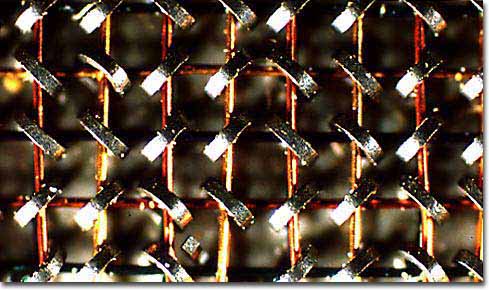|
The development of core memory, which became widely used in computers by the early 1960s, was a significant event in the history of memory technology. The first person to substantially contribute to this development was physicist An Wang, but a group of scientists working under Jay Forrester were also pivotal in making the memory system practical. Prior to the invention of core memory, the main types of memory in use were electrostatic and magnetic drum memory, and, less often, mercury delay line memory. In comparison to these more antiquated forms of technology, core memory offered substantially greater memory-holding capabilities and a more practical size. Core memory, which was generally produced by low-paid industrial workers assembling arrays by hand, also eventually became reasonably priced, dropping to about one-hundredth of its original value before it was eventually replaced by silicon memory in the 1970s. Even after the rise of silicon, however, core memory was utilized for many years in certain critical applications because it is non-volatile, retaining its content even when its power supply is discontinued.
|
